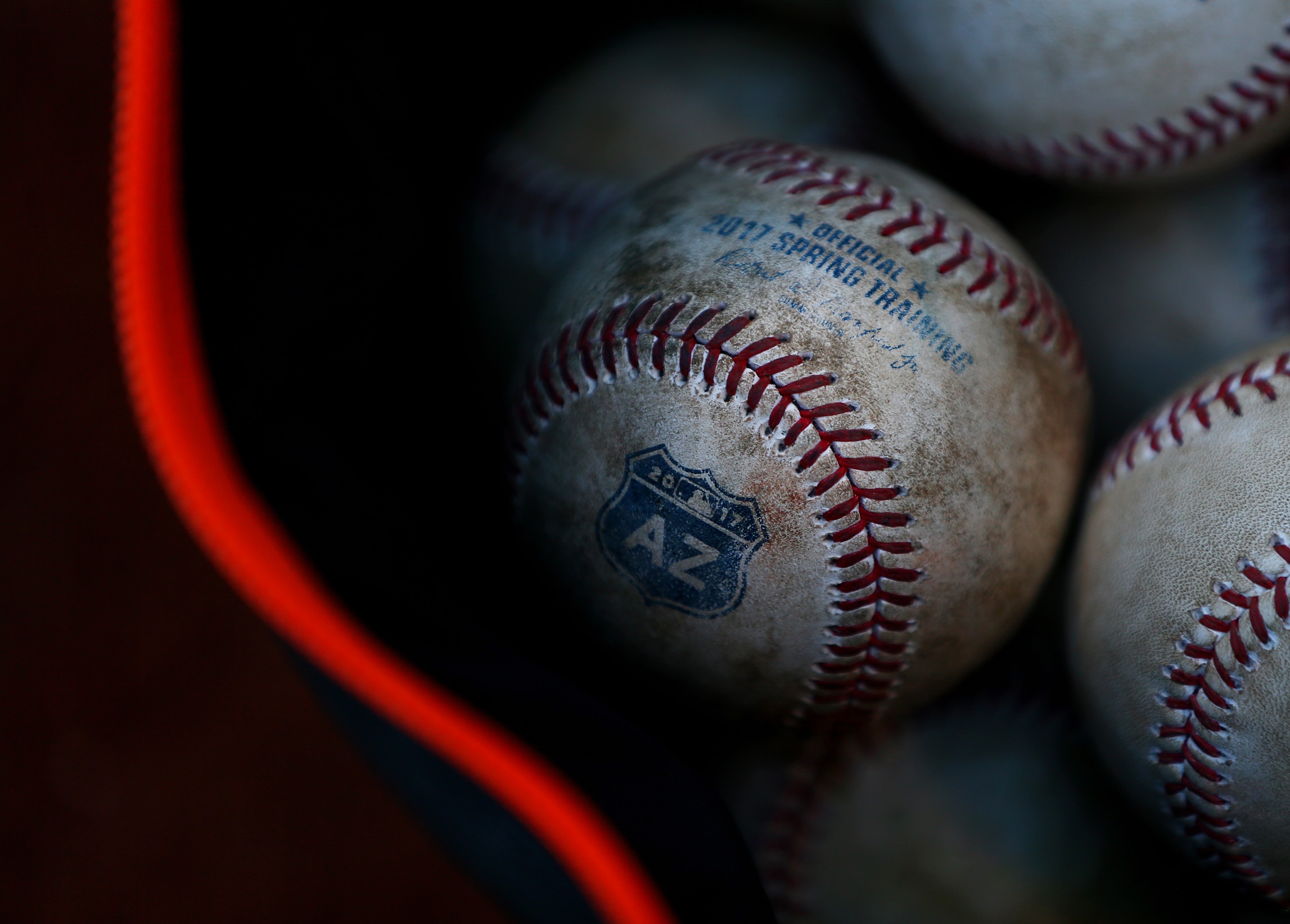This piece, previewed here, comes courtesy of BP’s Bryan Grosnick.
While everyone is (rightly) excited about Eric Thames and his extreme early success after years playing in Korea, there’s another bat-first 1B/DH type who is raking. Trey Mancini of the Orioles has capitalized on a tremendous cup of coffee last September and snuck into seven games so far in 2017. The result has been, to put it bluntly, incredible: his four homers pair with his three dingers last year to give him seven bombs in just 39 plate appearances and a career slash line of .361/.410/1.000. In other words, he’s following the famous Kevin Maas/Chris Shelton/Brian LaHair script quite nicely.
For now, Trey Mancini is the greatest major-league hitter who has ever lived. Sure, you have to qualify that by saying “on a rate basis” and “with a minimum of 35 plate appearances,” but it is wholly, if temporarily, true. We can use the incredible Baseball-Reference Play Index to find the top 15 hitters by OPS+ who ever lived with Mancini’s mark of 39 plate appearances. It’s a veritable who’s who of the game’s most inner-circle Hall of Famers and fearsome hitters. Check it out:

The best of the best! Ruth, Williams, Bonds, Gehrig, Musial, Mantle. Mark McGwire swoops in and Mike Trout is already a top-10 lifetime hitter. Thirteen of the players on this list are among the greatest hitters who ever lived, plus the Mighty Mancini … plus one more outlier. This is the guy I care about: Frank Ernaga. What. The. Hell?
He slots in at no. 14, between Jimmie Foxx and Stan Musial with a career 162 OPS+. Foxx and Musial are two of the greatest hitters ever, but I’d never heard of Ernaga until this week. Like Mancini, he does not belong. Like Mancini, he only makes this list because he maxed out at 52 plate appearances, never even losing his rookie eligibility. But unlike Mancini, Ernaga was out of baseball without ever getting an extended chance to prove he wasn’t one of history’s greatest batsmen.
Mancini will get every possible chance to lower his OPS+ to the C.J. Cron-ian levels we expect of him, but Ernaga ended his career without letting that stellar slash line droop to the level of mere mortals. He’s forever immortalized with the greats. How does something like this happen? Was Ernaga injured or killed, somehow physically unable to return to the field after a remarkable debut? Nah. Instead, he washed out of baseball because—as I understand it—the Cubs didn’t think he was good enough to play on their below-.500 1957 and 1958 teams.
The full story goes something like this: after signing with the Cubs in 1953, he worked his way up through the minors to eventually fill in with the big club in early 1957. In the first plate appearance of his first big-league game—May 24, 1957—the right-handed-hitting outfielder drew an all-timer: Warren Spahn of the Braves. Ernaga took the lefty deep, homering in his first at-bat. In his second plate appearance against Spahn, Ernaga tripled. His first game with the Cubs ended with him going 2-for-3 with a homer, a triple, and a walk in a 5-1 Cubs victory.
To read the rest, head over to the main site.

Bryan Grosnick states, “Instead, he got off to a hot start, couldn’t follow it up, and the Cubs moved on, unfazed by his debut or the fact that no other Cub in history ever had (or ever would!) hit a triple and a homer in his major-league debut.”
Not true. Starlin Castro also hit a triple and a home run in his major-league debut. Check out the box score from that game — http://www.baseball-reference.com/boxes/CIN/CIN201005070.shtml
I remember it distinctly. Someone should tell Mr. Grosnick about his error. I would but you have to be a premium member to post a comment on the BP site and I only have a regular subscription.